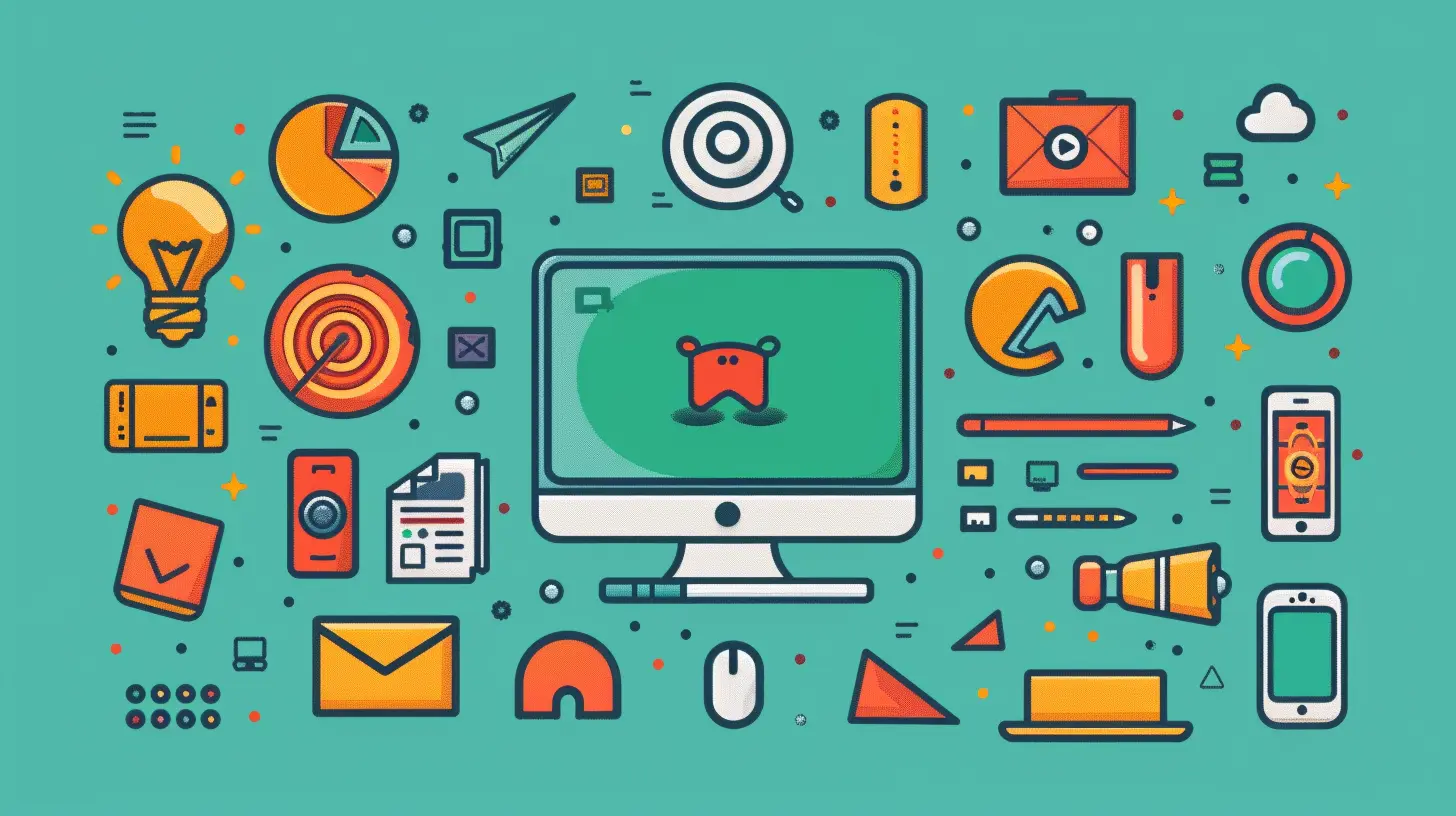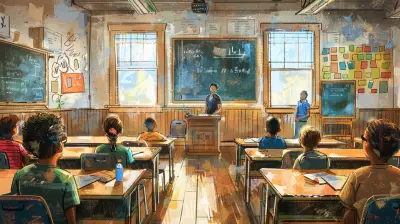How to Use Gamification for More Engaging Online Learning
4 May 2025
Online learning has taken the world by storm, but let’s be honest—sometimes, it can feel a bit dull. Staring at a screen, clicking through slides, and watching pre-recorded lectures can get monotonous. That’s where gamification swoops in like a superhero to save the day!
Gamification is all about bringing game-like elements into education to make learning more interactive, fun, and engaging. But how exactly does it work, and how can educators use it to make lessons more exciting? Let’s dive in! 
🎮 What is Gamification in Online Learning?
Think about the last time you played a game—maybe it was a mobile puzzle, a board game, or even a video game. What made it so compelling? Chances are, it had challenges, rewards, and a sense of progression.Gamification applies these principles to learning by integrating elements like points, leaderboards, badges, levels, and challenges into the educational experience. It transforms passive learning into an active adventure.
Instead of just memorizing facts, students engage with content in a way that feels like a game. This not only increases motivation but also improves retention and makes learning more enjoyable. 
🎯 Why is Gamification Effective in Learning?
Before we jump into how to use gamification, let's understand why it works so well.1. Boosts Engagement
Let’s face it—most students struggle with focus, especially in online learning. Gamification keeps learners hooked by adding fun elements like goals, progress bars, and rewards.2. Encourages Active Learning
Instead of passively consuming information, students are encouraged to take action. Whether it's solving challenges or earning points, gamification turns learning into an interactive experience.3. Enhances Motivation with Rewards
We all love rewards, right? Whether it’s unlocking a new level or earning a badge, these small victories keep students motivated and eager to progress.4. Provides Instant Feedback
Traditional learning often involves waiting days or weeks for grades. With gamification, learners get real-time feedback, helping them understand what they need to improve immediately.5. Creates a Sense of Achievement
Progress bars, certificates, and rankings give students a sense of accomplishment. This builds confidence and encourages them to push further.Now that we know why gamification works, let’s break down how you can implement it effectively in online education. 
🚀 How to Use Gamification for More Engaging Online Learning
Gamification isn’t just about throwing in some points and calling it a day. It needs to be strategically implemented to truly enhance learning. Here’s how you can do it:1. Set Clear Goals and Objectives
Before adding gamification elements, define what you want to achieve. Do you want students to complete more assignments? Improve quiz scores? Actively participate in discussions?Once your objectives are clear, you can design game mechanics to support them.
2. Incorporate Point Systems
Points work like a virtual currency—students earn them for completing tasks, answering questions correctly, or participating in discussions.For example:
- +10 points for completing an assignment
- +5 points for participating in a class forum
- +20 points for scoring over 80% in a quiz
The key is to keep it balanced so students feel rewarded without making it too easy.
3. Introduce Badges and Achievements
Badges are like digital trophies. They symbolize milestones and motivate students to keep progressing.For instance:
- “Quiz Master” badge for scoring 100% on a quiz
- “Discussion Leader” badge for actively engaging in forums
- “Consistency Champion” badge for logging in and completing tasks consistently
These badges not only reward effort but also create a sense of competition and pride.
4. Use Leaderboards for Healthy Competition
Let’s be real—everyone loves a little friendly competition! Leaderboards encourage students to push themselves to climb the ranks.For example, you could display:
- The top 5 students based on quiz scores
- The most active participants in online discussions
- The highest number of completed assignments
This taps into students’ competitive nature, making learning more exciting. Just be sure to keep the competition positive and supportive!
5. Incorporate Levels and Progression
Levels make learning feel like an adventure. Instead of presenting all the content at once, structure it in levels where students “unlock” new material after completing challenges.For example:
- Start at Beginner Level → Unlock the next level by finishing assignments
- Reach Advanced Level → Unlock bonus content or extra resources
This keeps learners engaged and gives them a reason to keep going.
6. Create Challenges and Quests
Instead of traditional assignments, turn tasks into quests.For example:
🎯 “Solve this riddle to move to the next lecture.”
🎯 “Complete this case study to earn a secret reward.”
By turning lessons into missions, students feel a sense of adventure while learning.
7. Use Storytelling to Make Lessons More Immersive
Who doesn’t love a good story? Instead of dry textbooks, try building a narrative that connects lesson elements.For example:
- A history course could follow a student "traveling through time" to different eras.
- A science course could take students on a "mission to Mars", unlocking knowledge along the way.
Adding a story helps learners connect emotionally with the content, making it more memorable.
8. Provide Instant Feedback and Encouragement
Gamification is most effective when students receive immediate feedback. Whether it’s a congratulatory message for completing a quiz or a gentle push to improve, feedback keeps them motivated.For example:
✅ “Great job! You just earned 50 points.”
❌ “Oops! Try again, and you’ll get another chance to level up.”
Quick feedback makes students feel valued and helps them stay on track.
9. Use Virtual Rewards and Incentives
Not all rewards have to be badges or points—consider real-life perks like:🎟 Extra credit points
🎁 Exclusive downloadable resources
🏆 Certificates of achievement
Small rewards create positive reinforcement, making students want to engage more.
10. Encourage Social Learning through Team Games
Learning doesn’t have to be a solo journey. Create team-based challenges where students must collaborate to achieve goals.For example:
- Group quizzes where teams compete for the highest score
- Discussion-based challenges where groups must come up with the best answer
- “Escape Room” style tasks where students solve puzzles together
Social learning builds teamwork, communication, and engagement. 
🏆 Final Thoughts
Gamification is more than just a trend—it’s a powerful tool that transforms online learning into an engaging and interactive experience. By incorporating elements like rewards, levels, and challenges, educators can keep students motivated, engaged, and eager to learn.So, whether you’re a teacher, course creator, or student, try adding a touch of gamification magic to online learning and see how it sparks motivation and boosts retention!
Now, are you ready to level up your learning?
all images in this post were generated using AI tools
Category:
Online LearningAuthor:

Monica O`Neal
Discussion
rate this article
6 comments
Ariella Thomas
Gamification is a powerful tool that transforms online learning by increasing engagement and motivation. By incorporating game elements like rewards and challenges, educators can create immersive experiences that captivate learners and enhance knowledge retention. Embrace this strategy for impactful education.
May 15, 2025 at 8:25 PM

Monica O`Neal
Thank you for your insightful comment! I completely agree—gamification truly enhances engagement and retention in online learning. Your points highlight its potential to create immersive educational experiences.
Nellie McQuillen
This article highlights the potential of gamification to enhance online learning. It’s a refreshing reminder that integrating game elements can boost motivation and engagement, making education more interactive and enjoyable for students.
May 13, 2025 at 12:47 PM

Monica O`Neal
Thank you for your feedback! I'm glad you found the article insightful. Gamification truly can transform the online learning experience!
Faith Gomez
Gamification can transform online learning by boosting motivation and enhancing engagement, making education more interactive and enjoyable for students.
May 11, 2025 at 8:52 PM

Monica O`Neal
Absolutely! Gamification is a powerful tool that can elevate online learning by making it more interactive and enjoyable, ultimately enhancing student motivation and engagement.
Olympia Diaz
Gamification: because who said learning can't be as thrilling as a video game?
May 11, 2025 at 3:56 AM

Monica O`Neal
Absolutely! Gamification transforms learning into an exciting adventure, making knowledge acquisition both engaging and enjoyable.
April Foster
Gamification can transform online learning by fostering motivation and interaction. By incorporating game elements, educators create an engaging environment that encourages exploration and deeper understanding.
May 8, 2025 at 8:31 PM

Monica O`Neal
Absolutely! Gamification not only boosts motivation but also enhances interaction, making learning more engaging and effective. Thank you for your insight!
Zephyrwind McIntyre
Gamification is like adding sprinkles to your learning dessert! 🎉✨ Embrace playful techniques to make online education fun and engaging—your students will thank you for it! 🍰🎮
May 8, 2025 at 11:33 AM

Monica O`Neal
Absolutely! Gamification adds that extra layer of fun, making learning more enjoyable and effective. Let's sprinkle some creativity into online education! 🎉




